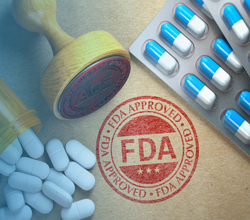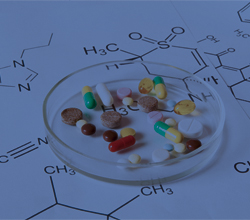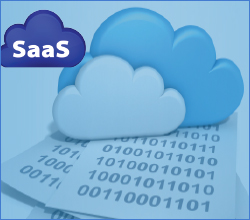
Test Method / Design Verification and Validation
 John E Lincoln
John E Lincoln

Product Id: 706920
Both the U.S. FDA and EU's MDR expect documented risk-based device test method and design Verification and Validation under U.S. FDA cGMP, EU MRD and ISO 14971

Computer System Validation (CSV) vs. Computer System Assurance (CSA): Aligning the Agile Methodology to the GAMP®5 "V" Model and System Development Life Cycle (SDLC) Methodology
 Carolyn Troiano
Carolyn Troiano
 120 Min
120 Min
Product Id: 706921
As part of the Case for Quality program US FDA Center for Devices and Radiological Health noted how an excessive focus by industry on compliance rather than quality may be diverting resources and management attention toward meeting regulatory compliance requirements vs. adopting best quality practices. There has also been a lower than anticipated investment in automation and digital technologies, which could greatly improve quality and process control. A key element is a risk-based, product quality and patient-centric approach to Computer System Assurance (CSA) vs. the traditional Computer System Validation (CSV) waterfall approach. This encourages critical thinking based on product and process knowledge and quality risk management over prescriptive documentation driven approaches.
This is where FDA determined that “WHAT” is required can be done (the “HOW”) in different ways and does not have to be according to the “checklist” mindset of most CSV work, where you create documents without specifically addressing the risk of potential failure of each requirement.
GAMP®5 supports the use of incremental, iterative, and evolutionary approaches including agile, for development of custom applications. Keys to success include a robust Quality Management System and well trained and highly disciplined teams following well-defined processes supported by tools and automation.

Terminally Sterilized Pharmaceutical Products – Parametric Release ( New USP<1222>, November 2019) and its Relationship to the new British Terminal Steriliation Methodology (March 2019)
 Barry A Friedman
Barry A Friedman
 90 Min
90 Min
Product Id: 706908
This General Information Chapter (USP<1222>) will first cover the general issues related to parametric release, regardless of the modes of sterilization, and then discuss some specific modes of sterilization. It will also include information on USP<55> Biological Indicators as well as EU “Guideline on the Sterilization of Medicinal Products…” (March 2019). The webinar will discuss why it provides more accurate information than the sterility test regarding the release of terminally sterilized product to the marketplace.

The 510(k), IDE, Q-Sub, De Novo, and PMA Submission and Approval Process
 John E Lincoln
John E Lincoln
 90 Min
90 Min
Product Id: 706915
The U.S FDA requires that 21 basic elements be addressed in the traditional 510(k) submission. This can serve as a model for other submissions.

Impact Assessment for Change Control
 Alan M Golden
Alan M Golden
 60 Min
60 Min
Product Id: 706337
Attend this webinar to learn the importance of doing a complete impact assessment prior to implementation of changes under change control. Tools and techniques will be presented to aid in organizing and streamlining impact assessments.

How to Ensure Your Foreign Vendors are FDA Compliant: Conducting Vendor Audits, Monitoring, and Using Checklists
 Joy McElroy
Joy McElroy
 90 Min
90 Min
Product Id: 705735
This webinar will give information on auditing foreign vendors for FDA compliance. It will discuss initiating audits, planning and preparing vendor audits, as well as, monitoring foreign vendor compliance. This webinar will provide FDA guidance on foreign vendor expectations, what to do and what not to upon selecting a foreign vendor. It will also provide audit formats and checklists for ensuring a foreign vendor is qualified.

Conducting Effective Mock FDA Inspections
 David L Chesney
David L Chesney
 90 Min
90 Min
Product Id: 706913
This webinar will explain the differences between a GMP audit and a mock regulatory inspection, and will highlight the key considerations for effective conduct of a mock inspection, including problems to avoid.

Normality Testing: Applications and Issues
 Steven Wachs
Steven Wachs
 90 Min
90 Min
Product Id: 706899
This webinar discusses applications of normality testing and several issues that may arise when testing data for normality. Several methods for testing data for normality are presented. We discuss some of the common types of goodness-of-fit tests that may be used (e.g. Andersen-Darling, Kolmogorov Smirnoff, etc.). We also discuss common reasons that normality tests are rejected.

Accident/Incident Investigation and Root Cause Analysis
 Joe Keenan
Joe Keenan
 60 Min
60 Min
Product Id: 706903
This webinar course will cover all of the steps necessary in identifying how to properly conduct a workplace accident/incident investigation to drive to the root cause.

USP <61>/<62> Microbiological Enumeration and Examination of Non-Sterile Products – Understanding the Current Standards for the Revised USP and Harmonized EP Microorganisms
 Barry A Friedman
Barry A Friedman
 90 mins
90 mins
Product Id: 706883
The objective of this live, interactive webinar is to explore the changes to these historic USP test methods, compare them to the new European Pharmacopoeia (EP), 2.6.12 Microbiological Examination of Non-Sterile Products: Microbial Enumeration Tests and 2.6.13 Microbiological Examination of Non-Sterile Products: Test for Specified Microorganisms, methodology and how it impacts the typical cGMP microbiological laboratory.

Advanced Auditing for Data Integrity
 Joy McElroy
Joy McElroy
 90 Min
90 Min
Product Id: 705275
This training program will teach attendees best practices on how to perform audits for data integrity within their organization. Attendees will also learn how to centralize management and eliminate silos.

Usability Principles for Medical Devices: Interpreting and Implementing IEC 62366
 John E Lincoln
John E Lincoln
 90 Min
90 Min
Product Id: 706879
This webinar will provide valuable guidance to regulated companies in development and implementation of Use Engineering / Human Factors Engineering using the 9 stage model in IEC 62366-1. IEC 62366-2 on recommended implementation considerations will be briefly considered, with the focus on IEC 62366-1, the basic methodology. the webinar willshow when and how these tools are incorporated into R&D design control, risk management, validation, root cause analysis, CAPA / falure investigations, GMP auditing, and liability reduction. Unlike risk management, use engineering may not always be necessary, depending upon the user interface under review. Use engineering is designed to reduce product risk, increase intuitive product use, reduce liability, and less chance of recalls.

How To Create an Effective Export Control Compliance Program under the Export Administration Regulations in 2023
 Douglas Cohen
Douglas Cohen
 60 Min
60 Min
Product Id: 703983
This training program will assist attendees in establishing and enhancing an export compliance program and offer best practices for export compliance given under the Export Administration Regulations (EARs).

How to Prepare an Effective Audit Manual for an Internal Audit Department
 Marna Steuart
Marna Steuart
 75 Min
75 Min
Product Id: 703684
This webinar will instruct attendees on how to develop an internal audit manual and offer start to finish instructions and templates on how to perform different types of audits given the project description. Audit fieldwork, audit reporting and follow-up, work-paper filing, and project closure are some of the other areas the webinar will cover.

How to Create Clinical Evaluation According to EU MDR 2017/745 Article 61 and Annex XIV
 Frank Stein
Frank Stein
 75 Min
75 Min
Product Id: 706887
Attend this webinar to understand, what are the changes to the previous medical device regulation and how to implement the changes in your current quality management system and your technical documentation. Your implementation needs smart ideas to reach the right level to pass the quality management audits and technical documentation audits and review by your notified body.

Monitoring High Risk Transactions
 Doug Keipper
Doug Keipper
 60 Min
60 Min
Product Id: 703001
This BSA/AML (Bank Secrecy Act/ Anti Money Laundering) compliance training will help attendees understand, identify and mitigate the risks associated with high risk transactions.

Workplace Violence Prevention
 Joe Keenan
Joe Keenan
 60 min
60 min
Product Id: 705522
This webinar will teach you how to get proactive and put programs in place to prevent a workplace violence episode and how to respond to an active shooter scenario. This training will discuss in detail the Do's and Don'ts in reference to workplace violence prevention.

Cybersecurity and US FDA Requirements
 John E Lincoln
John E Lincoln
 90 Min
90 Min
Product Id: 706716
Cybersecurity is the art of protecting networks, devices, and data from unauthorized access or criminal use. It is the practice of ensuring confidentiality, integrity, and availability of information.

Knowing your Post-Market Clinical Follow-up (PMCF)
 Frank Stein
Frank Stein
 60 Min
60 Min
Product Id: 706888
Attend this webinar to understand, what are the changes to the previous medical device regulation and how to implement the changes in clinical post market surveillance into your current quality management system according to ISO 13485:2021. Your implementation needs smart ideas to reach the right level to pass the quality management audit by your notified body or authority inspection.

Managing Risks in Combination Products and Drug Delivery Systems
 John E Lincoln
John E Lincoln
 90 Min
90 Min
Product Id: 706878
This webinar will provide valuable guidance to regulated companies in development and implementation of Product Risk Management Planning, Implementation, and Use. There will be added focus on the special needs of combination products. Also increased focus on the often high risk considerations of drug delivery systems, with the recent increased concern posed by potential cybersecurity vulnerabilities. This webinar will expand this tool into R&D design control, training, marketing, validtion, root cause analysis, CAPA / fralure investigations, GMP auditing, and liability reduction. Regular use of a few simple but powerful tools in a Product Risk Management File and Review template can contribute greatly to reduction of product liability, company-wide cost reduction efforts, less chance of recalls, and an improved bottom line.


























